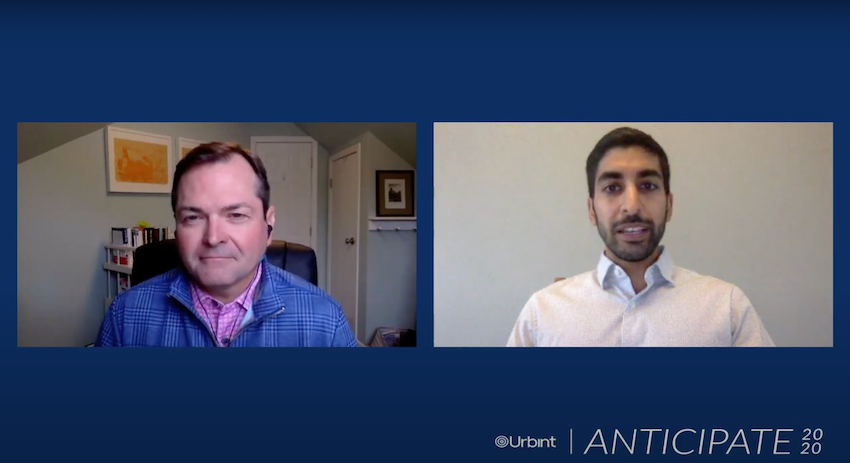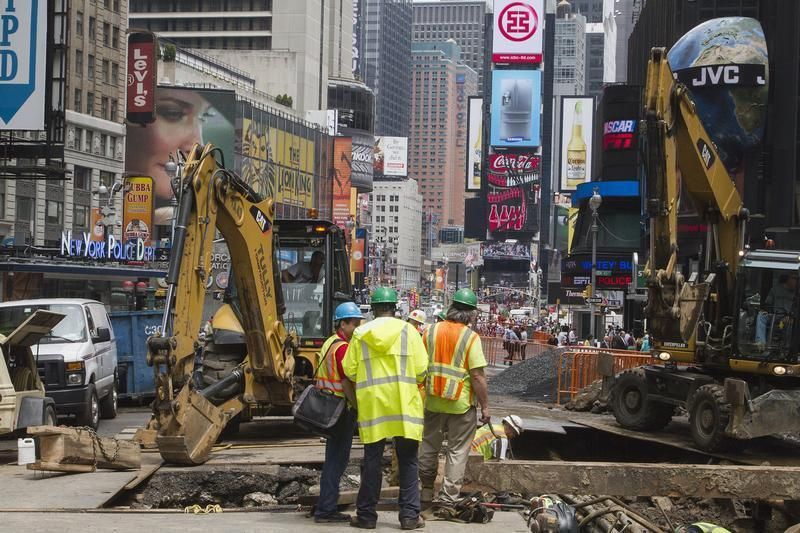The following is a contributed article by Brien Sheahan, Commissioner of the Illinois Commerce Commission, Jimmie Zhang, a legal and policy advisor to Commissioner Sheahan, and Corey Capasso, CEO of Urbint. This article originally appeared in Utility Dive.
We live in the age of big data.
Utilities used to read customer meters 12 times per year in person. Now smart meters generate reports every 15 minutes remotely. That’s thousands of times more information at a fraction of the cost. In combination with an ever-growing database of environmental data external to the utility, utilities receive more data than they know what to do with.
According to a survey from Utility Analytics Institute, less than half of utilities have standardized tools and procedures to leverage such data. That shouldn’t be surprising; the large influx of data created in the last decade has rendered traditional analytical techniques relatively impotent.
The utility industry isn’t alone in facing this overwhelming data challenge. The response has been to utilize innovative solutions like artificial intelligence (AI) to bring order and generate predictive value behind such data.
The success of such efforts is evident across many industries.
MIT showed that their artificially intelligent model can predict the onset of breast cancer 5 years in advance. Amazon now shows what you want to buy before you realize it. The trends that the utility industry faces today necessitate the consideration of such technology.
New infrastructure challenges
In the last half-century, trends in urbanization have resulted in over 80 percent of the U.S. population living in urban areas, up from 64 percent in 1950. This dramatic uptake in population density has engendered a series of new challenges for infrastructure development and operation.
The big question is: How do we accommodate this growth and increasing complexity while ensuring the sustainability and resilience of our infrastructure?
The current state of our communities is increasingly at risk, considering the growing stress placed on our aging utility systems and the human capital necessary to maintain and operate them.
Nearly half of all “billion-dollar disasters” have occurred in the last 10 years (adjusted for inflation). The utility workforce is aging: More than 25 percent of the current workforce is expected to turn over in the next 5–7 years. And, as regulators and infrastructure owners and operators understand, our aging system poses a severe risk to public safety.
Just last month in Durham, a gas explosion killed one and injured 25 others. Similar incidents involving aging cast-iron mains in cities such as Allentown, Austin and Philadelphia have killed dozens of people and injured many more.
The Merrimack Valley gas explosion in Massachusetts last September even garnered swift attention from federal lawmakers, leading to the introduction of the Leonel Rondon Pipeline Safety Act in the Senate to tighten pipeline safety regulation.
Unsurprisingly, local distribution companies (LDCs) face overwhelming operational challenges to ensure public safety while minimizing rate impact. More than $270 billion dollars are being poured into pipeline upgrades across the country to increase reliability and reduce methane leaks.
At the same time, policymakers and state regulatory commissions are continuing to raise expectations for utility performance as a result of public safety and environmental concerns on gas distribution systems.
One prominent issue that LDCs are grappling with is how to better understand the external risks posed to their system.
For example, a major impact of urbanization is that it precipitates a host of new construction and redevelopment activity. As a result, gas distribution operators are observing an increase in excavations that could potentially damage pipelines and cause severe hazards to the local community and environment.
Using artificial intelligence (AI)
Illinois has been looking at ways to reduce the number of third-party damages. These damages can be caused by error from numerous sources: excavators, contractors “locating” LDC gas lines or instances where someone digs but doesn’t call the customary “call before you dig” number.
Enabled by a forward-looking regulatory environment, one Illinois LDC has been tackling these types of challenges by working with firms incorporating the latest developments in AI.
By modeling the physical world that represents external threats facing our infrastructure, and applying AI, utilities can now predict instances of a variety of hazards allowing them to make smart operational decisions.
Methane leaks, areas of corrosion, locations of cross-bores, and high volumes of odor calls can all be predicted with AI.
Third-party damages—when a construction company nicks a gas line, for example—are becoming more frequent in urban areas. AI is helping utilities intervene and potentially prevent 25 percent or more of potential damages caused by excavation.
States like California have formally recognized the benefit of using technologies such as predictive analytics as best practices in detecting and preventing harm.
Other areas of the utility sector are also leveraging technology advancements in AI. The California Wildfires last summer have focused concern for utilities around the country to develop strategies to mitigate such risks.
The primary cause of wildfires is the contact of energized transmission and distribution wires with vegetation susceptible to fire. Although existing rules and methods on vegetation management and clearance areas already exist, instead of blanketly increasing resources for tree-trimming and other forms of vegetation management, utilities in California and Colorado are proactively using drone-mounted LiDAR technology and corresponding AI software to conduct rigorous assessments of overhead electric systems.
The use of such technology allows novel ways of identifying at-risk infrastructure and the development of more cost-effective replacement strategies.
Predictive technologies are readily available to identify growing risks and dramatically reduce the rate and consequence of incidents, yet the uptake by the utility industry as a whole has been sluggish. Because the basic framework for utility regulation has not evolved from its inception at the turn of the 20th Century, state regulators bear some responsibility for the slow adoption of new technology.
The current conservative cost-of-service framework does not incentivize utilities to experiment or adopt innovative solutions. But increasingly innovation is necessary to provide the services and reliability that customers want and to ensure public safety.
Some states are moving in the right direction by removing the disincentive for investing in innovation, such as considering the capitalization of cloud computing expenditures.
The accelerating pace of new technology, in combination with the recent catastrophic failure of basic utility infrastructure around the country, requires policymakers and regulators to consider creating a more attractive environment for investment and innovation.
Close collaboration among private sector innovators, utilities and state public utility commissions will be necessary to identify critical areas where new technologies can keep communities safe and prevent potential life and property threatening events. One potential framework to enable such collaboration is the idea of a regulatory sandbox that has been gaining traction in the finance industry and starting to be considered by energy regulators.
While it has dependably supported the economic, industrial and consumer needs of the last century, the evolutionary pace of utility operations is no longer acceptable in an environment of accelerating urban transformation.
When it comes to solving modern challenges, we cannot rely on yesterday’s regulatory frameworks and technological solutions. A focus on innovation is paramount to address the challenges of today and the future.

